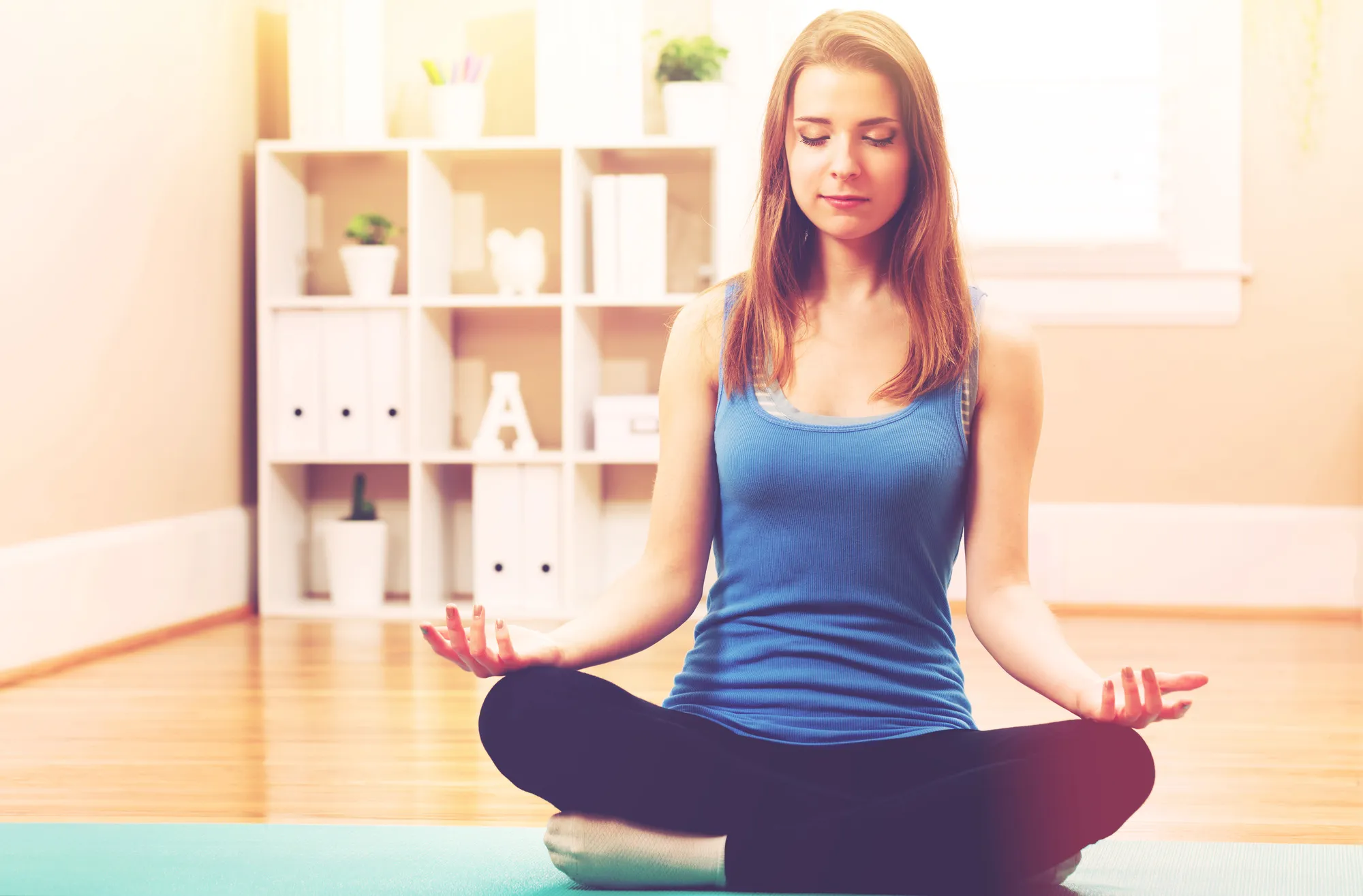Effective Exercises for Managing Anxiety and Boosting Your Mood
Are you searching for effective exercises to help manage anxiety and depression? You’re not alone. Anxiety and depression impact millions of people, affecting nearly every part of life. But the good news is that incorporating physical activity into your routine can be a powerful way to reduce symptoms and boost mood. [ The Mayo Clinic ]
This guide explores the best types of exercise to help with anxiety and depression, focusing on activities that are accessible and effective. Read on to discover seven exercises that can ease anxiety and naturally lift symptoms of depression.
1. Running for a Clear Mind and Reduced Anxiety
The mental health benefits of running are well-documented, especially for those aiming to reduce anxiety. Running releases endorphins—natural “feel-good” hormones—that instantly lift mood and lower stress levels. You don’t need to train for a marathon; even a 20- to 30-minute run a few times a week can make a difference.
Think of running as moving meditation. When you run, you focus on your breathing, pace, and the rhythm of your steps, all of which help shift attention away from anxious thoughts and bring a sense of calm. Running also offers a feeling of accomplishment, which can help interrupt the worry cycle that fuels anxiety. [ Runners World ]
Quick Tip: No need to go full speed. Start by jogging or alternating between running and walking. Use a playlist, podcast, or simply tune into nature’s sounds around you if you’re running outside.
2. Yoga: Finding Balance and Calm Through Movement
Yoga combines mindful movement, stretching, and controlled breathing, creating a natural remedy for anxiety and depression. Practicing yoga for mental clarity and relaxation can help ease tension, reduce stress, and promote mindfulness—essential tools for managing mental health.
Yoga offers flexibility: you can practice solo or join a group, which might even help you feel more connected. It’s all about being present in the moment, which can calm anxious thoughts and build self-compassion. Practicing yoga for anxiety also improves sleep and overall relaxation, essential when managing symptoms of depression.
Quick Tip: Start with gentle poses or beginner routines that focus on relaxation and breathing. As you progress, you may find that regular yoga practice helps build mental resilience, keeping you grounded.
3. Hiking: The Natural Remedy for Anxiety and Depression
Hiking combines physical activity with the mental health benefits of nature. The therapeutic effects of green spaces are well-known; studies show that being outdoors can significantly reduce anxiety and help lift depression symptoms. Hiking lets you experience these benefits while also getting a workout.
When you’re hiking in a natural setting—surrounded by trees, rivers, or mountains—it’s easier to find calm and clear your mind. The steady rhythm of walking, along with fresh air and scenic views, creates a unique blend of exercise and mental relief. Hiking provides a time for reflection and challenges your body, easing both stress and depression.
Quick Tip: Start with nearby trails and gradually take on longer hikes. Consider bringing a friend along for added social support—sometimes the best therapy is a good conversation on the trail.
4. Weightlifting: Building Strength and Confidence
Weightlifting for mental health benefits goes beyond physical strength; it can boost self-confidence and help release tension. Strength training for anxiety relief gives you a sense of control and focus, helping you feel empowered. Plus, lifting weights can be cathartic, releasing pent-up emotions in a safe, healthy way.
Each weightlifting session offers small achievements. For some, building physical strength translates into inner resilience, especially during challenging times. As an added bonus, weightlifting increases dopamine levels, a neurotransmitter linked to improved mood and a sense of reward.
Quick Tip: If you’re new to lifting, start with light weights or resistance bands. Gradually work up to more challenging weights. Working with a trainer can also help you stay motivated and avoid injury.
If you’re suffering from anxiety and feeling overwhelmed, we’re here to help you get on your path to peace.
Reach out and let us get you started today.
5. Walking: Simple, Yet Powerful for Mental Health
Walking may seem simple, but it’s one of the most accessible and effective exercises for managing anxiety and depression. The benefits of walking for mental health include reduced stress, improved mood, and increased mindfulness. Taking a daily walk, even for just 10 minutes, can help you unwind and step away from intrusive thoughts.
Setting a daily walking goal—such as 10,000 steps—can provide a sense of purpose and achievement. Walking outdoors offers an extra boost, with natural light and fresh air helping to ease symptoms of depression and anxiety. It’s also flexible, fitting easily into your day, whether it’s during a lunch break or after dinner.
Quick Tip: Try practicing mindfulness while you walk. Notice the sounds, colors, and scents around you. Walking meditation brings a sense of peace, helping to clear your mind and focus.
6. Swimming: A Refreshing and Therapeutic Exercise
Swimming to relieve anxiety and depression is highly effective because it combines physical movement with the calming sensation of water. The water supports your body, reducing stress on joints, which makes it ideal for anyone needing a low-impact exercise. Swimming also encourages deep, steady breathing, which naturally reduces stress. [ Help Guide ]
The mental health benefits of swimming are plentiful. Swimming laps, or even gentle water movements, engage all muscle groups, encouraging a natural endorphin release. Being in water creates a sense of weightlessness, which can bring about feelings of relief and relaxation. Many find that swimming feels like an escape—a moment of tranquility that helps them reset.
Quick Tip: If traditional lap swimming feels too intense, try water aerobics or simply moving through the water. You’ll still experience the calming effects and feel rejuvenated afterward.
7. Dancing: Moving to the Beat for a Mood Boost
Dancing isn’t only a workout; it’s a fun way to lift your spirits. Moving to music you enjoy is a natural mood booster, releasing endorphins and easing symptoms of anxiety and depression. Dancing offers an opportunity for self-expression, allowing you to connect with your emotions in a playful, carefree way.
Whether it’s a dance class, a group session, or just a solo dance party in your living room, dancing combines the physical and social elements that support mental well-being. Plus, dancing challenges your mind to learn new steps and rhythms, keeping you mentally engaged. [ WebMD ]
Quick Tip: Find a dance style that resonates with you, such as salsa, hip-hop, or ballroom. Play your favorite music, turn up the volume, and let loose. Dancing has a way of making worries feel lighter, even if just for a while.
Wrapping Up: Embrace Movement as Part of Your Mental Health Journey
When it comes to managing anxiety and depression, exercise can be a powerful addition to your toolkit. The best exercises to help with anxiety and depression allow you to connect with yourself, build resilience, and find moments of peace in movement. Remember, you don’t have to be perfect—just willing to try. Every little step counts.
At Talking Circles Therapy & Wellness, we believe in holistic wellness. We’re here to support you on your journey, whether through integrating exercise or other therapeutic strategies. Witnessing someone’s progress is an honor, and we’re committed to helping you find what works best for you.
To take the next step toward a balanced life, reach out and discover how we can help guide you to improved well-being.
The Benefits of Exercise for Mental Health: Beyond the Physical
Adding regular physical activity to your routine has numerous benefits for mental health, including:
- Natural Mood Enhancement: Exercise releases endorphins, which naturally ease symptoms of anxiety and depression.
- Better Sleep Quality: Physical activity helps regulate sleep, which is crucial for mental well-being.
- Improved Energy and Focus: Exercise increases energy, making it easier to manage daily tasks.
- Boosted Self-Esteem: Achieving small fitness goals builds confidence and a sense of accomplishment.
- Lower Stress Levels: Exercise reduces cortisol, the stress hormone, which helps manage anxiety.
With each activity, you’re investing in your well-being. When you’re ready to start or enhance your mental health journey, remember that Talking Circles Therapy & Wellness is here to support you every step of the way.
FAQ: Exercises for Anxiety and Depression
How does exercise help with anxiety and depression?
Exercise releases endorphins, which lift mood naturally. It also reduces cortisol, a hormone associated with stress, promoting relaxation and better sleep.
What are the best exercises for mental health?
There’s no one-size-fits-all answer. Running, yoga, hiking, weightlifting, and swimming all have unique benefits. The best exercise is one you enjoy and can do consistently.
How often should I exercise to see mental health benefits?
Aim for three times a week for 20–30 minutes. Even short walks can have an immediate, positive impact on your mood.
For more personalized guidance, or if you need help creating a balanced routine, Talking Circles Therapy & Wellness is here to help you build a life where you feel strong and balanced.
Take the Next Step in Your Mental Health Journey
If you’re ready to embrace a healthier, more balanced life, Talking Circles Therapy & Wellness is here to support you every step of the way. Our team understands that managing anxiety and depression is not a one-size-fits-all process—it’s a journey, one that deserves personalized care and compassionate guidance. With a blend of professional expertise and a genuine passion for seeing you thrive, we’re here to help you discover a path forward that works for you.
Here’s How to Get Started:
- Schedule a Consultation – Meet with one of our experienced therapists to discuss your needs and goals. This is your chance to share what’s important to you and let us know where you’d like to see positive change.
- Get a Personalized Plan – Based on your needs, we’ll create a tailored approach that could include exercise guidance, therapeutic sessions, or holistic wellness practices to support your mental health.
- Begin Your Journey – With ongoing support from a dedicated therapist, you’ll gain tools to manage anxiety and depression effectively, build resilience, and find moments of peace in everyday life.
Don’t wait to take control of your well-being. Whether you’re looking to get started or deepen your journey, our team at Talking Circles Therapy & Wellness is ready to help.
Links and Resources for Helping Anxiety with Exercise
- “Depression and Exercise: Mayo Clinic Insights”
https://www.mayoclinic.org/diseases-conditions/depression/in-depth/depression-and-exercise/art-20046495 - “How Exercise Can Help With Depression: Healthline Guide”
https://www.healthline.com/health/depression/exercise - “Physical Activity’s Impact on Mental Health: NIH Study”
https://pmc.ncbi.nlm.nih.gov/articles/PMC9902068/ - “Understanding Depression and Anxiety: CDC Overview”
https://www.cdc.gov/tobacco/campaign/tips/diseases/depression-anxiety.html
“The Mental Health Benefits of Exercise: HelpGuide Resource”
https://www.helpguide.org/wellness/fitness/the-mental-health-benefits-of-exercise




